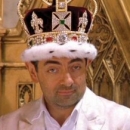New Map
17 posts
• Page 2 of 2 • 1, 2
Re: New Map
How come ships cross Land (downhill or no)? I mean, Ships have ta round the land/shore to get to the other port, should not they? Surely they are not hovercrafts? Eg, Thorakas to Gasp should take more time than Thorakas to Vaasburg. Neapolis to Caspian should take a lot more time to reach Goroum or Pania. Not all land seperated ports are connected by rivers.
Johnny English
-

Sir Johnny English - Posts: 100
- Joined: Sun Mar 08, 2015 11:25 am
Re: New Map
Besides, add some forest, some better art mountain ranges, and volcanoes(all right, they are just an obsession of mine, but it might look cool on maps).
Name the continents, give nations the ability to rename ports (Don't tell me that real world nations don't do it, they almost always do it) are just few things that might add some kick to the map and the topography of Avonmora.
Name the continents, give nations the ability to rename ports (Don't tell me that real world nations don't do it, they almost always do it) are just few things that might add some kick to the map and the topography of Avonmora.
Johnny English
-

Sir Johnny English - Posts: 100
- Joined: Sun Mar 08, 2015 11:25 am
Re: New Map
Sir Johnny English wrote:How come ships cross Land (downhill or no)? I mean, Ships have ta round the land/shore to get to the other port, should not they? Surely they are not hovercrafts? Eg, Thorakas to Gasp should take more time than Thorakas to Vaasburg. Neapolis to Caspian should take a lot more time to reach Goroum or Pania. Not all land seperated ports are connected by rivers.
Well, if we gonna be that realistic.. how come all the ports are so close? 1 hr sail time, that's barely 5miles... which makes the whole map about 30-40mile square and the island of Tortuga about 2x1 mile in size.. so how does it have a population of 50mil and produce several million crates of tools every few days?
or... the map is representative, as are the sailings times, just so we can play without waiting 2 weeks for a fleet to arrive somewhere...
-1 : Move to archive.
-

Most Lee Harmless - Posts: 3988
- Joined: Sat Mar 01, 2014 3:48 pm
Re: New Map
or, more seriously : its not modern day, there is no GPS, until the latter part of the 18th century there was no way to establish longitude when out of sight of land : so, back then, for a long voyage, you sailed in the general direction of, hoped to make landfall roughly nearby, hoped to recognize any landmarks, and thus now knowing where you were in relation to your destination, you then set course in that direction. Mostly, seafarers stayed close to land as long as they could, then hoped to cross any large expanse by the shortest route, but also aiming at a landmass big enough to be recognizable : then, you would also have to steer a wide berth around any navigational hazards, like rock formations, reefs, shoals and so on. Remember, you dont have pin-point location devices on board: by the time you reach where that hazard should be, you could be 10 miles north, or 10 miles south, or slap bang on top of it: its why sharp look-outs were vital. Add in that sailing at night was risky : lanterns didn't illuminate much beyond a few yards, so most vessels would heave to and, if not anchor, would aim to maintain enough way not to drift too much in the wrong direction.
So, all in all, a vessel travelling a known route, close to land, as in around an island, could make better overall way than one which was crossing a similar distance but via an open ocean expanse, which could well add a day or two to its journey if its course was disrupted by poor winds, cross currents and such, and add more time if it made a poor landfall well off course.
So, all in all, a vessel travelling a known route, close to land, as in around an island, could make better overall way than one which was crossing a similar distance but via an open ocean expanse, which could well add a day or two to its journey if its course was disrupted by poor winds, cross currents and such, and add more time if it made a poor landfall well off course.
-1 : Move to archive.
-

Most Lee Harmless - Posts: 3988
- Joined: Sat Mar 01, 2014 3:48 pm
Re: New Map
Danik wrote:Sir Johnny English wrote:How come ships cross Land (downhill or no)? I mean, Ships have ta round the land/shore to get to the other port, should not they? Surely they are not hovercrafts? Eg, Thorakas to Gasp should take more time than Thorakas to Vaasburg. Neapolis to Caspian should take a lot more time to reach Goroum or Pania. Not all land seperated ports are connected by rivers.
Well, if we gonna be that realistic.. how come all the ports are so close? 1 hr sail time, that's barely 5miles... which makes the whole map about 30-40mile square and the island of Tortuga about 2x1 mile in size.. so how does it have a population of 50mil and produce several million crates of tools every few days?
or... the map is representative, as are the sailings times, just so we can play without waiting 2 weeks for a fleet to arrive somewhere...
I agree, but i think tthe timings must be increased/decreased by scale to suit it. Like, 15 mins extra/less or so.
Johnny English
-

Sir Johnny English - Posts: 100
- Joined: Sun Mar 08, 2015 11:25 am
Re: New Map
see the second (serious)part of my previous answer : sea voyages and navigation in this era was not only about pure distance between ports ;
-1 : Move to archive.
-

Most Lee Harmless - Posts: 3988
- Joined: Sat Mar 01, 2014 3:48 pm
Re: New Map
I did see it and I understood it (Its a miracle! Congratulations for writing something that I can understand! I mostly don't understand anything, seriously). You, as you wonderfully summarize, say that distance, speed, natural obstacles, navigation related knowledge, etc are just few variables affecting time taken and thus sailing from only sea seperated ports maybe equally long as/longer than travelling between land seperated ports.
But again, the map must be updated better to specify that. Cartographers of that time did know places to avoid and thus they marked it on maps. More detail is needed to say that they depend on this factor and that factor.
Small factors cannot go into maps. Storms for example cannot be in maps unless there are seas which are at storm always. But other factors suchs as currents, whirlpools, doldrums etc can be displayed in the map. There is a simple need for detail, thats all. Why? Its just for teh game, for nothing else. Most games give you loads of detail with a single thing (A good thing for games). But PG gives you combined info only when several factors are considered together(Not necessarily good or bad, but definitely different). Eg: Trade routes, plundering, fame etc can be done without much thought, but the advantage lies only if you keep all the factors in mind and do it accordingly.
Come on, this game seriously relies on the imagination of the user; Not all users can imagine off many things. Some visualization, okay, but I think it would be better if the game really triggered the imagination in a specific way that it wants to represent. My mind sees only that the sea is calm, the water is clear and thus it shud take less time than rounding a full coast. Your mind, Danik, might imagine that there are things too small to see that will speed up/slow down the fleet accordingly, but I, and many others too, possibly, will not. (Actually, I believe that we couldn't care less about the time taken, weren't I suffereing from Boredom). It won't be that bad if the map was tweaked to look a little better and the time scales are a [strike]little[/strike] more realistic and matching.
But again, the map must be updated better to specify that. Cartographers of that time did know places to avoid and thus they marked it on maps. More detail is needed to say that they depend on this factor and that factor.
Small factors cannot go into maps. Storms for example cannot be in maps unless there are seas which are at storm always. But other factors suchs as currents, whirlpools, doldrums etc can be displayed in the map. There is a simple need for detail, thats all. Why? Its just for teh game, for nothing else. Most games give you loads of detail with a single thing (A good thing for games). But PG gives you combined info only when several factors are considered together(Not necessarily good or bad, but definitely different). Eg: Trade routes, plundering, fame etc can be done without much thought, but the advantage lies only if you keep all the factors in mind and do it accordingly.
Come on, this game seriously relies on the imagination of the user; Not all users can imagine off many things. Some visualization, okay, but I think it would be better if the game really triggered the imagination in a specific way that it wants to represent. My mind sees only that the sea is calm, the water is clear and thus it shud take less time than rounding a full coast. Your mind, Danik, might imagine that there are things too small to see that will speed up/slow down the fleet accordingly, but I, and many others too, possibly, will not. (Actually, I believe that we couldn't care less about the time taken, weren't I suffereing from Boredom). It won't be that bad if the map was tweaked to look a little better and the time scales are a [strike]little[/strike] more realistic and matching.
Johnny English
-

Sir Johnny English - Posts: 100
- Joined: Sun Mar 08, 2015 11:25 am
17 posts
• Page 2 of 2 • 1, 2
Powered by phpBB © 2000, 2002, 2005, 2007 phpBB Group
Design by PiratesGlory.com
Design by PiratesGlory.com
